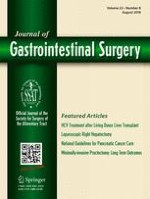Erschienen in:

02.04.2018 | How I do it
Usefulness of the Ligamentum Venosum as an Anatomical Landmark for Safe Laparoscopic Left Hepatectomy (How I Do It)
verfasst von:
Ji Hoon Kim
Erschienen in:
Journal of Gastrointestinal Surgery
|
Ausgabe 8/2018
Einloggen, um Zugang zu erhalten
Abstract
Anatomical landmarks are commonly utilized in surgical practice to help surgeons to maintain an anatomical orientation. The ligamentum venosum (LV) is an anatomical landmark that is utilized during left hepatectomy via both the open and the laparoscopic approaches. We describe the usefulness of the LV as an anatomical landmark in performing a safe laparoscopic left hepatectomy. The key characteristic of our technique is that the LV is divided at the end of the surgery. Our technique involves identification and dissection of the LV, but we do not divide it during liver mobilization. The LV marks the boundary for safe vascular inflow control of the left hemiliver. Following exposure of the middle hepatic vein, hepatic parenchymal transection is curved toward the LV, which serves as a landmark to guide surgeons to achieve an optimal plane of transection in the late stages. A suitable transection point of the left bile duct is determined based on the location of the LV. Between February 2013 and September 2017, 21 consecutive patients underwent pure laparoscopic left hepatectomy. The median operation time was 240 min (range 180–350 min), and the median intraoperative estimated blood loss was 200 ml (range 80–600 ml). Major postoperative complications occurred in one patient (4.8%). The median postoperative hospital stay was 8 days (range 5–15 days). This systematic approach using the LV as an anatomical landmark may serve as a safe and effective technique to perform a laparoscopic left hepatectomy.